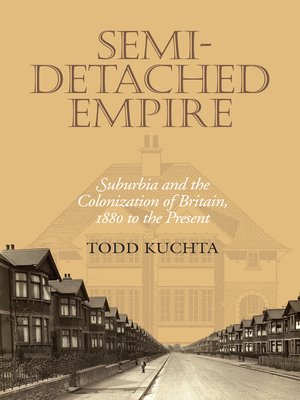Semi-Detached Empire
ebook ∣ Suburbia and the Colonization of Britain, 1880 to the Present
By Todd Kuchta

Sign up to save your library
With an OverDrive account, you can save your favorite libraries for at-a-glance information about availability. Find out more about OverDrive accounts.
Find this title in Libby, the library reading app by OverDrive.



Search for a digital library with this title
Title found at these libraries:
| Library Name | Distance |
|---|---|
| Loading... |
In the first book to consider British suburban literature from the vantage point of imperial and postcolonial studies, Todd Kuchta argues that suburban identity is tied to the empire's rise and fall. He takes his title from the type of home synonymous with suburbia. Like the semi-detached house, which joins separate dwellings under one roof, suburbia and empire were geographically distinct but imaginatively linked. Yet just as the "semi" conceals two homes behind a single façade, suburbia's apparent uniformity masks its defining oppositions—between country and city, "civilization" and "savagery," master and slave.
While some people saw the suburbs as homegrown colonies, others viewed them as a terra incognita beyond the pale of British culture. Surveying a range of popular and canonical texts, Kuchta reveals the suburban foundations of a variety of unexpected fictional locales: the Thames Valley of H. G. Wells's Martian attack and the gaslit London of Arthur Conan Doyle's Sherlock Holmes, but also the tropical backwaters of Joseph Conrad's Malay Archipelago and the imperial communities of Raj fiction by E. M. Forster and George Orwell. This capacious view demonstrates suburbia's vital role in science fiction, detective tales, condition-of-England novels, modernist narratives of imperial decline, and contemporary multicultural fiction.
Drawing on postcolonial theory, urban studies, and architectural scholarship, this book will appeal to readers interested in Victorian, modern, and contemporary British literature and cultures, especially those concerned with how place shapes class and masculine identity in the nineteenth and twentieth centuries.







